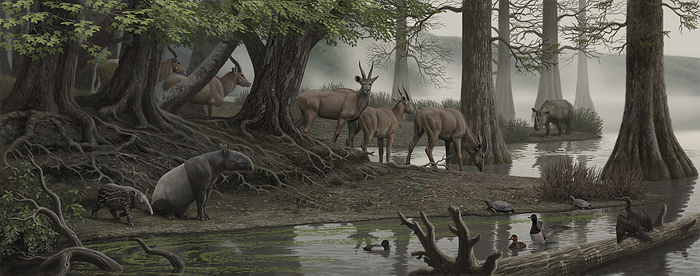
RM
Pliocene epoch, Camp del Ninots, Spain, illustration
Illustration of Camp del Ninots, Spain, during the Pliocene epoch (5.3-2.6 million years ago). Members of the extinct Alephis genus of antelope can be seen to the centre and left, as well as tapir (Tapirus sp., front left), waterfowl (front right), turtles (right) and an extinct Stephanorhinus rhinoceros (back right). Camp del Ninots was the site of a volcanic eruption around 3 million years ago and a lake subsequently formed in the volcanic crater. It is now a valuable palaeontological site as the conditions in the lake sediment allowed minimal decay of the organisms that died there. As a result, many well preserved fossils have been found at the modern site., by MAURICIO ANTON/SCIENCE PHOTO LIBRARY

More
Top Categories
